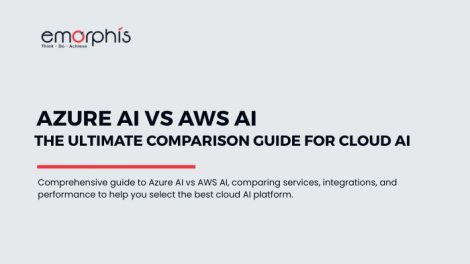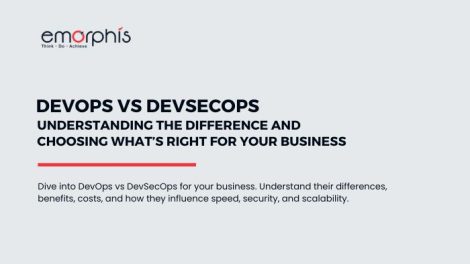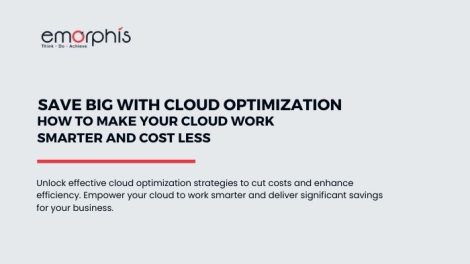In the present world, the concept of cloud is no longer, hidden in obscurity. It has gained so much respect in terms of digital transformation that it now applies in everyday life. But here is a catch. The first one has to get a complete understanding of cloud infrastructure, its working, and the recent trends that will define the world of cloud computing.
Still, a long way to go, yet cloud computing services have now become an invincible part that everyone from a user to a business tycoon wants to avail themselves to ensure greater sustainability in their life (and not to forget their business).
In this guide, we will unravel some hidden and not-so-known facts about cloud computing. Moreover, we will also recognize how it will shape the future of working and living. Let’s go more deeply into the give exciting adventure!
Concept of Cloud Computing
First of all, what is cloud computing?
Technically speaking, cloud computing is the distribution of large infrastructural resources in digital format through the use of the internet for delivering a pool of hosted services for the customers.
In simple terms, cloud computing implies perfect felicitating on-demand computing services from storage to applications to networking. The only thing to keep in mind is the presence of a proper internet medium over the cloud through a payment processor called ‘pay as you go’.
Therefore one thing is clear: with cloud computing at the helm, customers can access five crucial aspects:
- Data Management
- Data Storage
- Devices
- Networking
- Internet & Other Online Services
Why is Cloud Computing Important?
If you think that cloud computing is just a trendy topic that attracts people only to store their photos and videos online, then you are binging on the wrong concept. It is a new business model that has changed the way of thinking among enterprises. Not only is it helping companies (large, medium, and small) for storing and accessing data easily; it is also aiding in the smooth functioning of their business operation.
Technology has enabled even a small business to excel perfectly in this competitive world. Today, every cloud-native application development company is implementing cloud computing to have wide appeal to their customers through the digital transformation of their business. There are several reasons which show that cloud computing is essential for the effective conduction of a business. It has been explained through the following steps:
I. High-Cost Effectiveness
From a business point of view, cloud computing has come as a game-changer as cloud consulting services are provided on-demand to the users. It implies payment is done only for what the users utilize through a subscription-based technology which negates other costs (like maintenance, labor, and purchasing).
II. Great Flexibility
If your business is experiencing continuous bandwidth; then it is time to switch to cloud computing. It will make resource management easier than ever. Just, you have to pay for resources per month and get access to the flexible packages (that include cloud storage and VPS providers)!
III. Full Data Recovery
There is no threat of data loss in the cloud platform as they are stored in multiple locations. Even if one server fails to function well, data is safe at other locations. The given service will be fruitful for small businesses that lack high-tech infrastructure and often face data theft.
IV. No Need of Maintenance
Maintenance is a state of concern for a traditional setup. However, there is no need for maintenance for a cloud computing environment. No other cost is involved as everything is handled by the service providers!
V. Perfect Digital Transformation
Every business today aspires to have a complete digital transformation. It includes fully digital migration of data from the current system to the cloud. It is often a costly method, but cloud computing allows seamless transition with no consequences and that too, with great ease.
Top Benefits & Drawbacks of Cloud Computing
The arrival of the cloud has transformed the way of conduction business. Numerous benefits come with the cloud. So before switching to it, one must get acquainted with the profits that one avails from the given technology.
i. Significant Cost Reduction
The basic financial principle is to earn more than spend. With cloud computing at the helm, there is no need to waste thousands of dollars on maintenance, upgrading technology, and purchasing software licenses. All these issues are taken care of by cloud-based apps just at minimum cost.
ii. High-Level Security
Cloud computing is more secure than an in-house computing system. It’s because cloud computing service providers work under strict scrutiny and are obliged to provide sufficient care to their customers’ info through employing full-time digital security person.
iii. High Reliability
The best part of cloud service providers is that they remain aloof because of redundancy. How? It’s simple! The data is stored not just on a single but across multiple servers. So, there is superb reliability in accessing data and services without any effect even from the occurrence of hardware failure.
iv. No Hardware Requirement
There will be no requirement for physical storage as everything will get hosted in the cloud. Furthermore, the provision of backup will boost the company’s prospects in case of a disastrous event.
However, with every advantage, there are some disadvantages associated with any technology, and cloud computing is no such exception.
i. Downtime: The Biggest Disadvantage
Downtime is the greatest threat to the popularity of cloud computing, and it means going down internet access. Robust data plans with cellular service help one to get internet access even during power shortages. But they have limited life, and there is difficulty in accessing cloud services after it goes out.
ii. Control Going Out of Hand of Users
When someone transfers all their services to the cloud, they also had over their crucial data in their hand. Companies with in-house staff may find it difficult to handle the issues that will ultimately lead to the enlargement of the current issue.
iii. Lacks All Crucial Features
There is a limitation with services available from cloud computing. Some service providers tend to offer only limited services compromising some limited features only. The only solution for the customers is to make sure, they check the facilities offered by the cloud service providers.
What are the types of Cloud and their Services?
An interesting part about cloud computing is that multiple types segregate and provide basic cloud facilities. Whether they work in the form of deployment or services, they offer you different levels of flexibility, management, and control.
In terms of deployment, it comes in four types:
a. Public Cloud
It is the sharing of all cloud resources such as memory, networking, CPU, and others on the public platform via the internet. Some notable examples are Amazon Web Services and Microsoft Azure.
b. Private Cloud
It is a privately owned system where 3rd party offers services with a high level of security, and sole control on the internet lies in their hand.
c. Hybrid Cloud
A combined form of the private and public cloud allows seamless working on a virtual private network to get an innovative business solution.
d. Community Cloud
They offer cloud services in the same industry working for similar goals. A community cloud environment is created after meeting the basic requirements that will boost up the performance.
Likewise, there are further types of cloud computing in terms of services that offer a solution to numerous problems. They are of three types:
a) Infrastructure as a Service (IaaS)
IaaS offers flexible cloud services by full virtualization of data and server storage to meet the demands of the customers and users alike. Its examples are Azure Virtual Machine and Google Cloud VM Instance.
b) Platform as a Service (PaaS)
PaaS creates a platform for offering multiple services starting from developing to the delivery of software services on an on-demand basis. It includes Google App Engine and Microsoft Azure.
c) Software as a Service (SaaS)
It is a fully-developed and robust cloud solution that does not require installation and can be downloaded directly through the internet. Example: Microsoft 365, Salesforce, and Google Apps.
Read more at – Types of Cloud Computing and How They are Differ from each other
What are Emerging Cloud Computing Trends in 2021
There has been tremendous development in cloud computing. It has reinforced the belief among businesses, entrepreneurs, and even startups that even during a pandemic, the operation will go on without any issue.
Development in the cloud computing sector is going at a fast pace. Likewise, the latest emerging trends in the given industry will allow in enhancing compatibility: a maturity sign. The cloud infrastructure, whether it is private, public or on-premise will shot to prominence with the adoption of these new trends.
Here, take a look at some of the latest cloud computing trends that are going to rock the business world in 2021.
a) AI will Dominate Cloud Computing with High Efficiency & Speed
AI is a key source that will help cloud computing adapt to the needs of the technology throughout 2021. Various sectors such as smart cities, autonomous vehicles, and combating pandemics have seen good results where the role of cloud computing has felt effectively. Furthermore, an increase in research and development will lead to enhance speed and efficiency in running services perfectly.
b) Multi-Cloud Infrastructure will Pave Way for Omni-Cloud
Today, most companies are opting for a multi-cloud solution. However, in the future, it will be relatively easy to procure in real-time with effective connectivity that will make them look more like an Omni cloud. As a general rule, soon most of the biggest organizations will likely offer products to their niche providers and help in digital engagement with customers across the globe.
c) Gaming, just like Movies will get Cloud Delivery
Recently, tech giant such as Amazon has launched their platform for cloud gaming services. It has revolutionized the gaming sector by giving direct access to the vast pool of gaming libraries for having instant access with a monthly subscription. So, no need to spend hundreds of dollars every year, all thanks to cloud computing.
d) Edge is going to Become New Cloud
As per the prediction from Forrester, that in the future, the edge is going to replace public cloud to become a new cloud service. It is an interchangeable cloud infrastructure that will allow proper storage and computing of assets present at the edge and adapt them with changing real-time scenarios.
e) Cloud Computing will go Server-less
The next evolution will be a server-less cloud computing system that will soon become the norm in 2021. The industries have started to implement it with notable services like automatic scaling, pay-for-value billing, and built-in high availability. Even code can be run on SaaS sources without the need for servers.
What is Cloud Security? How to Secure the Cloud
Cloud security means the use of those policies, technologies, and services that provide strict protection to the cloud data and applications from online threats. Basically, it is a shared responsibility between cloud service providers and customers through a shared responsibility model through:
- Provider’s responsibility
- Customer’s responsibility
- Responsibility based on the service model
Now, cloud security is divided into four categories. Both public and private cloud services, operated by the public cloud provider. The third is internal staff operated by the private cloud services, and the fourth is hybrid cloud services.
There is an urgent need to tackle online threats by using various security measures to ante up cloud security. Why? It is because of several challenges such as:
- Lack of visibility and tracking from outside influence
- 3rd party controls the cloud data
- Easy access to cloud data and applications
- High-level breaches in cloud-native development app
- Misconfiguration
- Internal threats
- Less focus on disaster recovery
To overcome all these cloud computing challenges, security experts have found out numerous ways to secure the cloud through the following six pillars of cloud security:
A. Implementation of Granular IAM & Authentication Controls across Infrastructures
It is easier to update Identity & Access Management (IAM) definitions by working in groups and giving more privileges to assets for a higher level of authentications. Also, take care of strong password policies with strict permission time-outs.
B. Control of Micro-Segments and Isolated Networks via Zero-Trust Cloud Network
The use of Virtual Private Clouds such as AWS and Azure will offer granular security policies for isolated networks and protect every virtual device and public IP address and even control micro-segments by reducing security IT workloads and securing data migration.
C. Enforcing Virtual Server Protection Policies
There is various cloud computing consulting agencies that offer virtual server protection policies like regular software updates and change management. They even adhere to compliance and government rules to offer automatic remedies wherever possible.
D. Application of Gen-Next Web Application Firewall for Effective App Safeguarding
Cloud uses gen-next firewalls to block malicious bot activities, DDoS attacks and reduce vulnerability exploits by forming a virtual security barrier around the virtual environment and thus prevents online cyber-attacks.
E. Use of Encryption for Enhanced Data Protection
Cloud enhances data protection through encryption across all transport layers to reduce risk management and secure file sharing system. It even secures data storage resources by detecting and removing misconfigured buckets.
F. Real-Time Detection of Known & Unknown Issues through Threat Intelligence
Cloud security vendors’ offers diverse tools that visualize threat landscape and simultaneous offers solution through quick response time. They also use AI-based anomaly detection tools to detect unknown threats and determine their risk profile and issue real-time alerts.
Last Thoughts
Though cloud computing is still in its nascent phase, its future looks very much bright. Whether it is public or private, clouds are now leading the development of enterprise technology. Moreover, with easy data sharing, a high level of security via firewalls is available and offers the perfect digital transformation that every company now aspires for.







